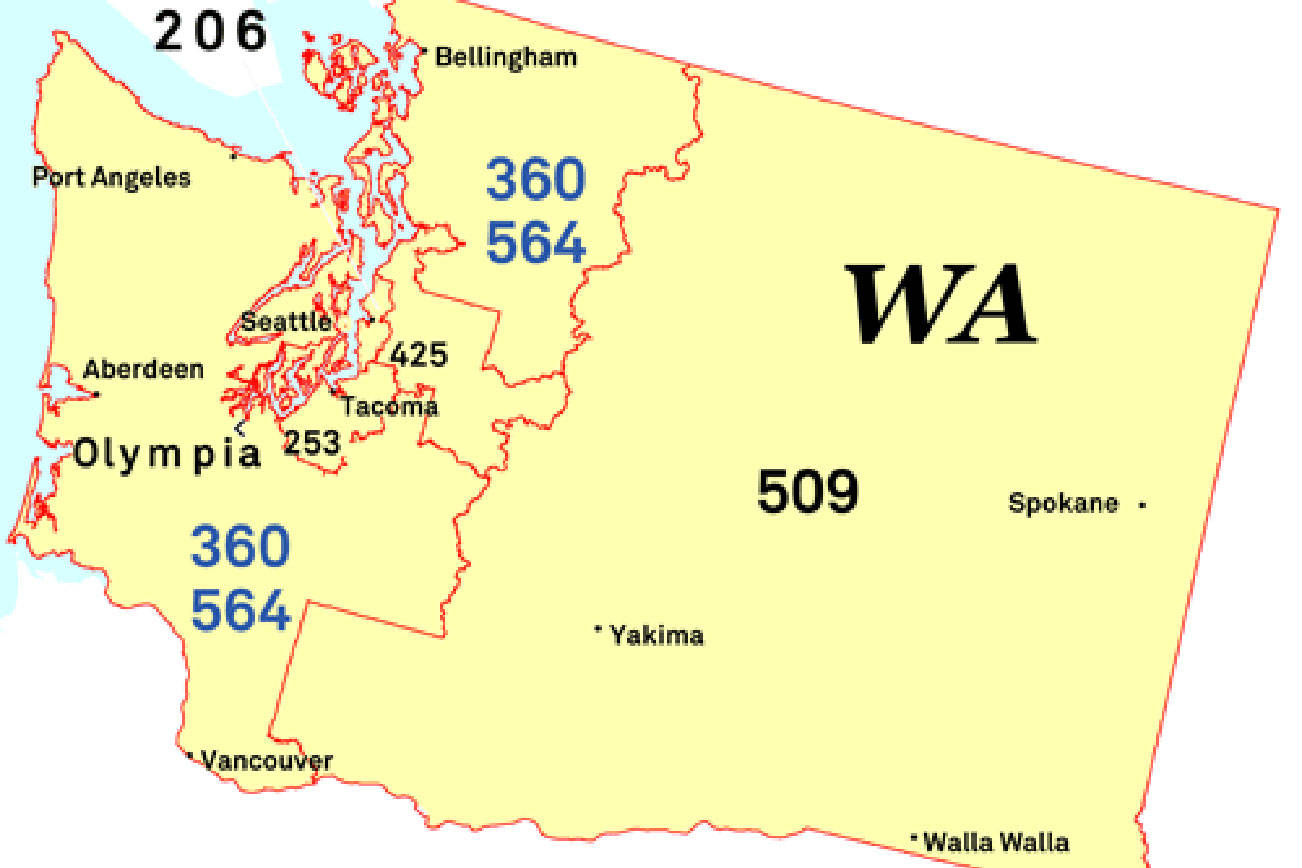Don’t automatically reject that call from area code 564.
It might be someone you know, not some annoying robot trying to sell you a timeshare. At least, not yet.
What’s up with that?
The 360 area code ran out of numbers. New customers in the 360 region now get a 564 area code, which actually has been around since 2017.
If you live in 425, 206 and 253, your days are numbered. You’ll eventually be part of the 564 club. This goes for cell, landline and voice-over-internet-protocol (VOIP) lines.
Here’s the lowdown:
The 564 is Washington’s sixth area code. It is an “overlay” code because it covers other codes. The 564 is not long distance in the overlay region, so you don’t have to dial a 1 from a landline. However, the 509 area code on the state’s east side is not included in the 564 overlay.
The 360 area code includes Marysville, Snohomish, Whidbey Island, Bellingham and Olympia. Seattle is in 206. The 425 includes Everett, Lynnwood and Edmonds as well as Renton, Redmond and Bellevue.
And, no, you 425 people can’t get a 564 yet. Not unless you cancel existing service and activate service with a new provider, said a spokesperson for the Washington Utilities and Transportation Commission, adding that the “FCC guidance prohibiting ‘vanity numbers’ could bar this practice.”
The North American Numbering Plan Administration has the area code system all mapped out.
Area codes were implemented to automate phone calls in an automated way.
When area codes were assigned in 1947, there were 77 in the nation. Now there are 335 area codes.
Area codes range from 201 to 989, with many numbers missing in between, such as those ending in 11 — so they are not confused with 911 and 411. The lowest number is in New Jersey. The highest, 989, is in Michigan.
Unlike ZIP Codes and the Interstate Highway System, the factor in area codes isn’t geography but population growth. Overlay codes are springing up all over.
California, with 36, has the most area codes. Next is Texas with 28. New York has 19. It scored the simplest code to dial on a rotary phone, 212.
As a Tedium.com blogger put it: “The largest and most prominent cities got the best codes, while smaller states had to drag the zero all the way around, almost as a punishment of sorts for not being bigger.”
Area codes were the topic of several skits on “Almost Live,” a Seattle show with Pat Cashman and John Keister that ran from 1984 to 1999. The sketch comedy show was revamped in 2013 and named after an area code, “The 206.”
There’s a reason why phones have letters spread over numbers 2 through 9.
Us oldsters can remember when phone numbers were alphanumeric, a fancy way of saying letters and numbers. Words and phrases were used for the letter prefixes with four- or five-digit phone numbers. On the “I Love Lucy” show, Lucy and Ricky would give their number as “Murray Hill 5-9975.”
The plan to convert to seven digits caused an uproar of sorts. The Anti-Digit Dialing League was formed in 1962, opposing what it termed “creeping numeralism.” S.I. Hayakawa, a San Francisco college professor and later a Californian Republican senator, helped organize the protest, which spread nationwide.
Creeping numeralism won big-time. These days, 10 digits is the norm.
After the area code, the seven-digit phone number begins with a three-digit central office or exchange code that signifies a specific location, such as a town.
In the 2003 Jim Carrey flick “Bruce Almighty,” God’s phone number was shown as 776-2323, with no area code, on the character’s pager. This prompted moviegoers to call it in their area code and ask to speak to God. Call it in the 425 area code and you get Jagow Family Dentistry in Mountlake Terrace. The office still gets an occasional call for the almighty.


